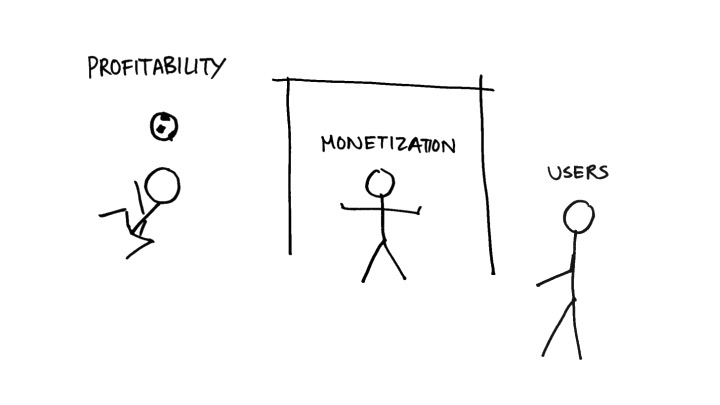
As somebody who has led growth teams I am frequently asked what “Growth” is. My simple answer is that it’s a mindset (this is of course, my opinion, there are many articles out there on the subject which I’d encourage you to dive in on). A growth mindset is a mindset of learning, experimentation, iteration, failing fast, looking at the full funnel, and leveraging data in decision making. However, this string of words can be easily mis-interpreted. Being flexible and failing fast could easily mean “chase the next silver bullet”, the idea of “let me try something and see what sticks” leads to a tangle of experiments, and “let me run a few programs and I’ll figure it out” often means a lack of goal setting and a lack of understanding of what works. Worse yet, over time you’ll have to put in more and more effort to manage the tangle of programs, which can burn out you and your team.
So how do you build growth in a sustainable and predictable way? I spoke at the Growth Hacking Meetup on the way I approach the solution, which is putting more structure and process into how you think about growth. It’s broken down into 8 very high level steps:
- Stage your company: know what stage your company is at; whether you’re trying to launch your first MVP, trying to get product market fit, trying to get product channel fit, or trying to scale beyond that (you’d be surprised how many people I speak to who don’t know).
- Know your strategic goal: are you going after users & engagement, monetization, or profitability?
- Model the funnel: get dirty with your data and map out your user journey with conversion rates. Segment as much as you can (new vs existing users, different lines of business, etc), look at CAC, MRR, LTV and so on, and from there identify what opportunities lie before you.
- Define your north star metric: set your company’s north star goal, ideally something that quantifies the magic moment when your users experience your product’s core value and are hooked for life. Your data from the previous step should help you here, hopefully whatever you pick is highly correlated with long-term customer retention.
- Create a prioritization grid: from the previous steps you should know your goals and opportunities, so place all the opportunities into a prioritization grid and start prioritizing ruthlessly. Have each row in the grid as an opportunity, then in the columns rate each opportunity in terms of cost, time to market, resourcing required, and whatever other criteria your team deems important. Hardest part of this is getting the team to align on the criteria and the stacked ranked importance of each, but it’s well worth the effort.
- Set targets: take the top few opportunities in your prioritization grid that you want to address in the near term, and set yourself some targets. Targets are important for you to track progress but more importantly they motivate your team and allow you to get a sense of what your team is capable of. You want targets that are bold and challenging, but not so far out there that they’re unachievable and demoralizing.
- Work on execution: create an execution process that makes sense for what you’re trying to tackle; define sprints and stand-ups, determine how often you review your prioritization grid, set up different streams for optimizations vs larger creative launches, tie goals with performance reviews, celebrate wins on a regular cadence, etc. Personally I’m a big fan of OKRs and would recommend you take a look at implementing that if you don’t already use it.
- Develop multidisciplinary team: create a minimum viable team that functionally contains product, engineering, design, data, and marketing (doesn’t have to be 5 separate people, collapse or expand as you require).
This of course is a super high level summary. Below is the full video (quality isn’t greatest but content is there). I’m hoping to publish a post with the full 8 steps in the future but thought I’d share this in the meantime. Let me know what you think!